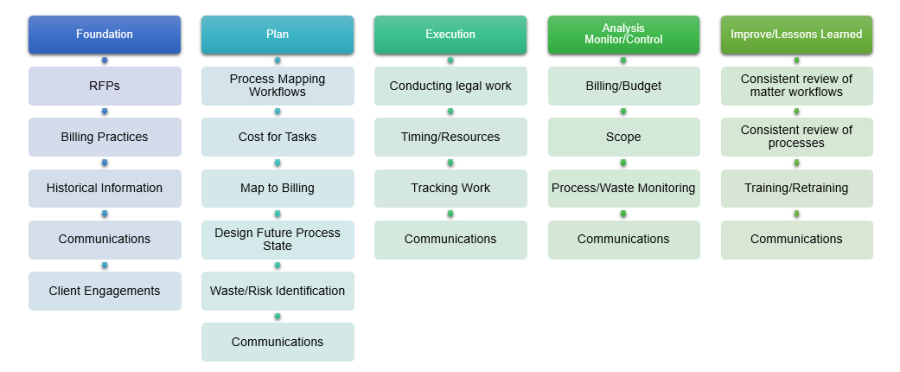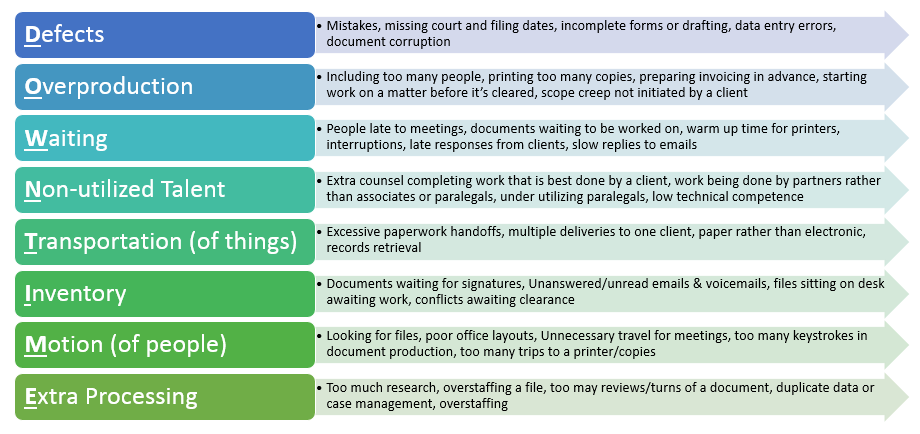Back in April, we hosted a webinar titled “Legal Project Management vs Legal Process Management,” in which we discussed the differences between the two terms. You can read the first part of the webinar and the recommended ‘roadmap’ approach to Legal Project Management in Part 1 of this blog post series.
Legal Process Management (LPM) is the ability to systematically monitor and control the quality, efficiency, and predictability of workflows to improve repeatability of legal work.
Legal Process Management entails reviewing the workflows and processes that your practices and attorneys perform on a daily basis. We’ve broken down some of the areas where you may need to evaluate processes based on five fundamental phases:
Most firms have barely reached the Foundation phase, which involves the analysis of processes related to generating and responding to RFPs, historical billing information, communications within the firm, and the frequency of client communications.
If your firm has started to evaluate the processes in the Foundation phase, then you may be on your way to the Planning phase. Planning is the most critical of the five phases. It is during this phase that you are able actually to take a step back to review practice-specific processes relating to particular types of matters and evaluate or ‘value map’ the details.
Conducting process mapping sessions with key stakeholders within a department or practice can lead to more streamlined workflows, better efficiency, better work product, and more profitability. There are three types of process maps – a process grid, a value stream map, and a process map. These three types of process maps can be used sequentially to allow your practice and legal teams to evaluate areas of waste within their processes. The process grid is used at the onset of the initiative to assist defining the process at a high level. The value stream map should be utilized in the next phase of mapping to assist the practice or department with identifying the big picture. This allows the firm to see where they may need to make strategic changes. The final step is to create and diagram the process map. This map details several items such as tasks, time, accuracy, waste, checklists, and personnel, to name a few. The purpose of this map is to create the process baseline for which the future state can be derived. Going through the process mapping procedure allows the practice to identify the DOWNTIME, otherwise known as the eight types of waste as identified within Lean Six Sigma.
Lean Six Sigma discusses the eight types of waste known as DOWNTIME as shown below:
By using the eight types of waste to review and refine your legal processes, your firm can help streamline productivity, provide better quality work to clients, accommodate predictability of client matters, and remain competitive as well as profitable.
Has your firm begun legal process mapping within your practices? Do you have a focus practice group that may be interested in becoming more “lean.” Pick one practice group as a starting point for firm. Do you have executive buy-in? This is a key success factor. Feel free to share your comments and thoughts below and please let us know how we can help get you started or dive deeper into facilitating process mapping workflows!

